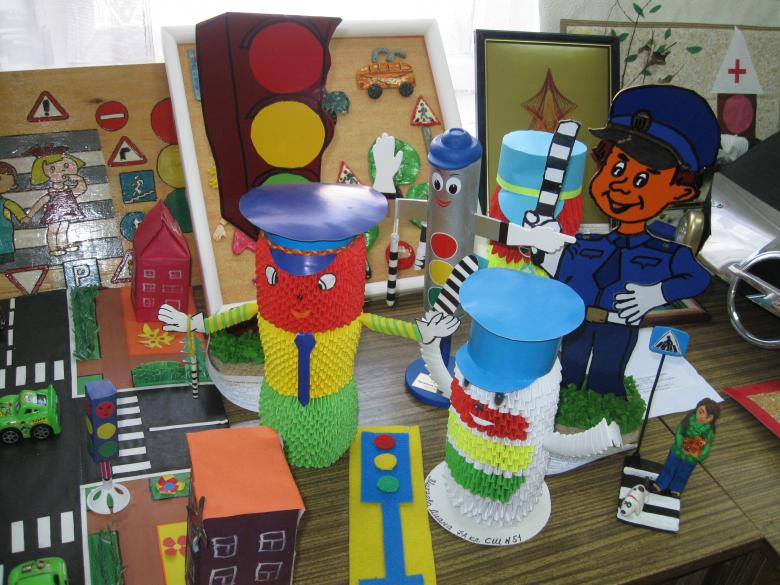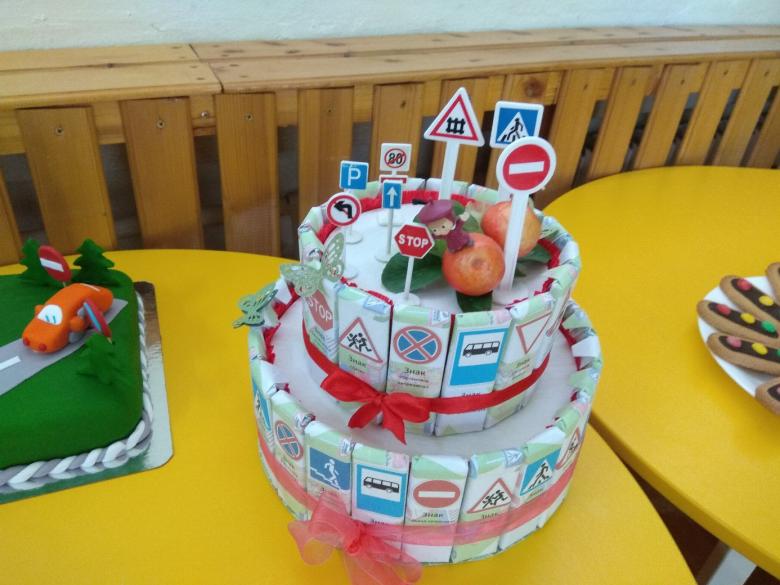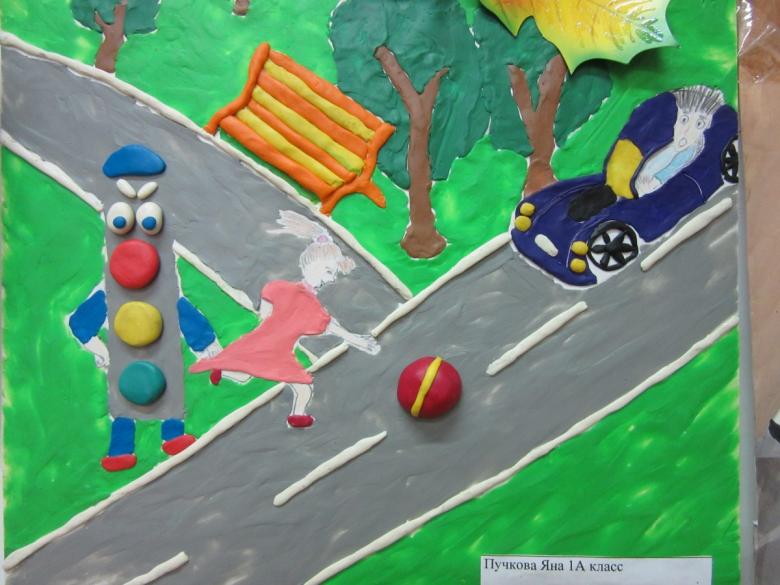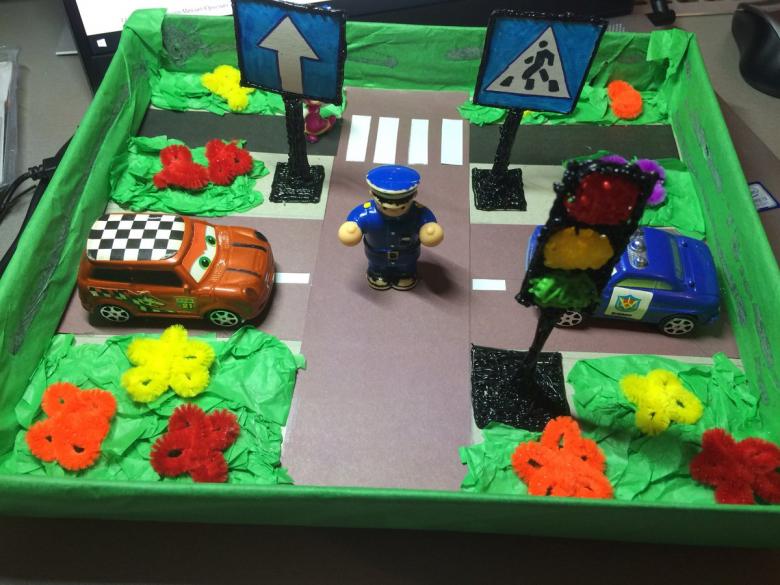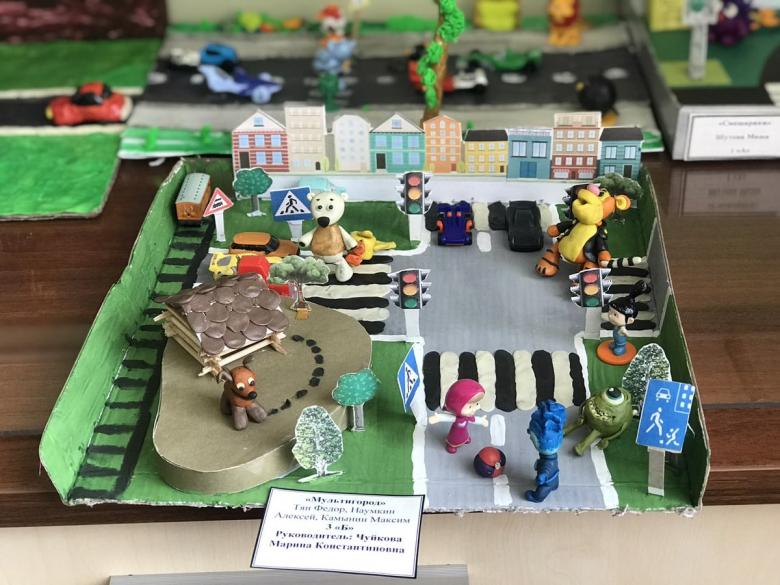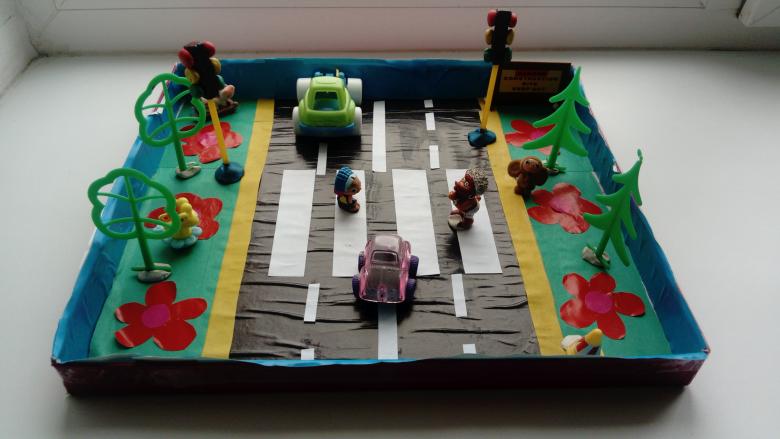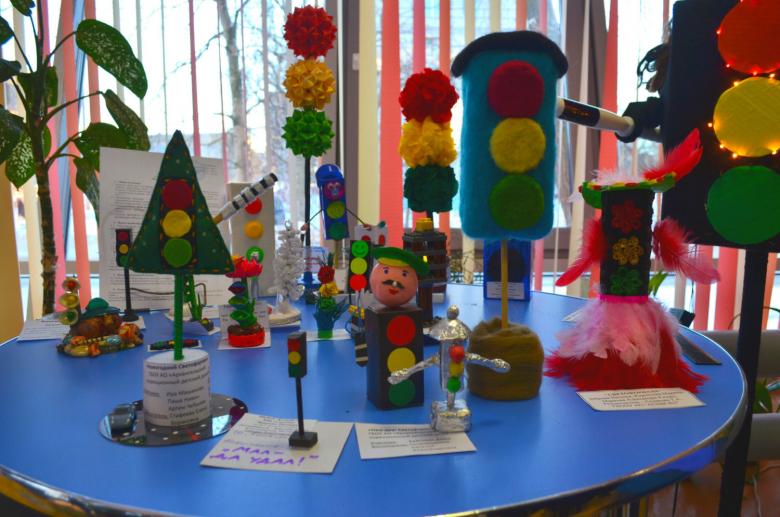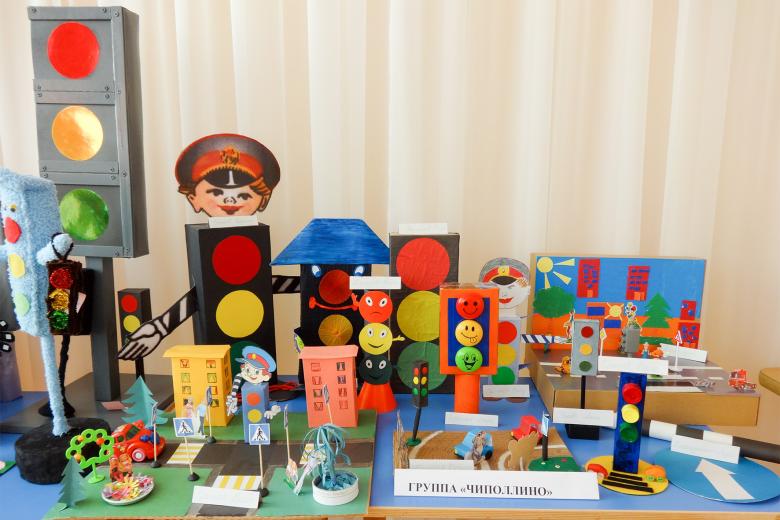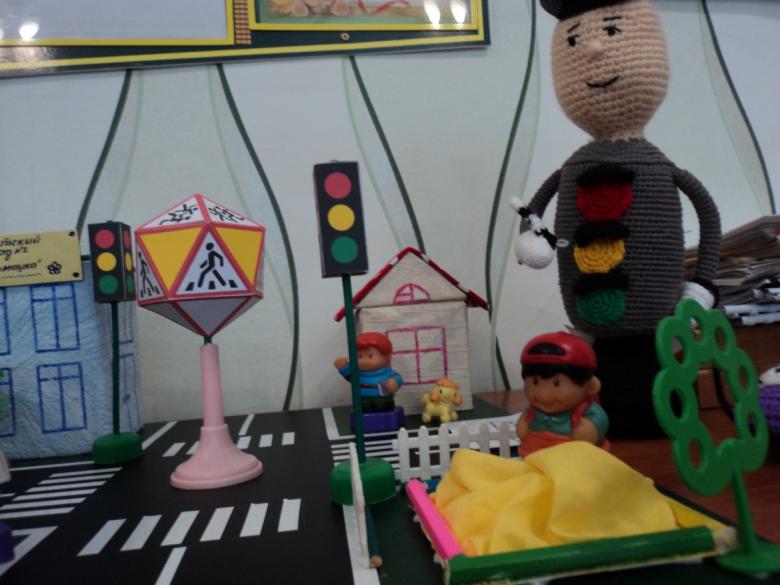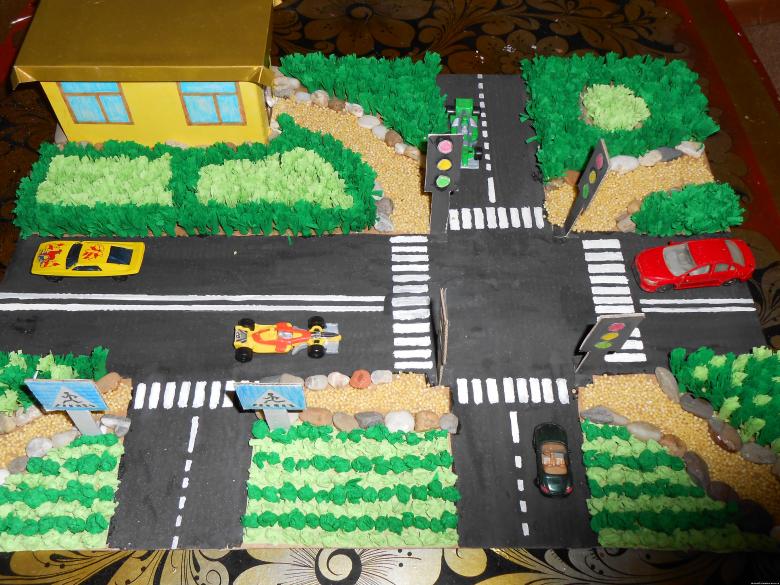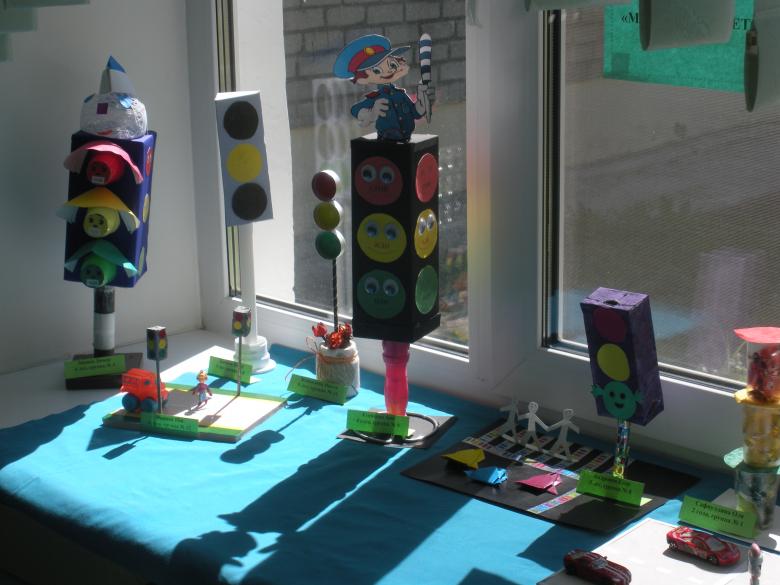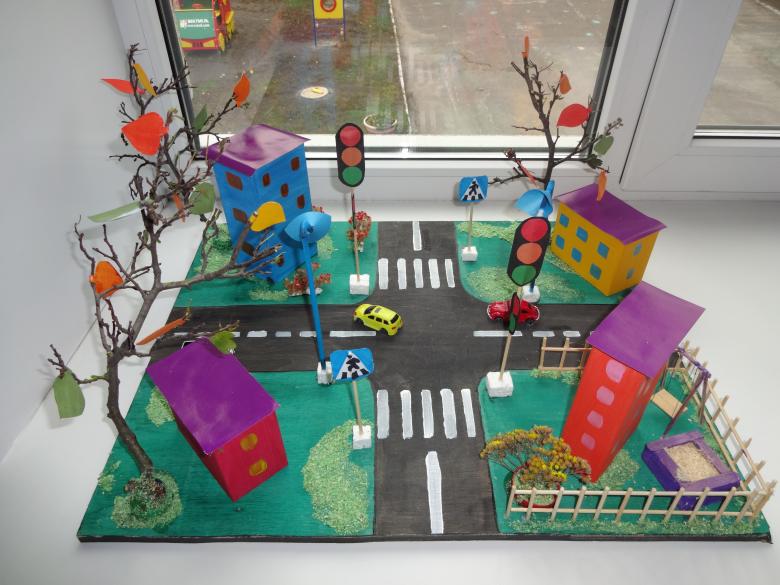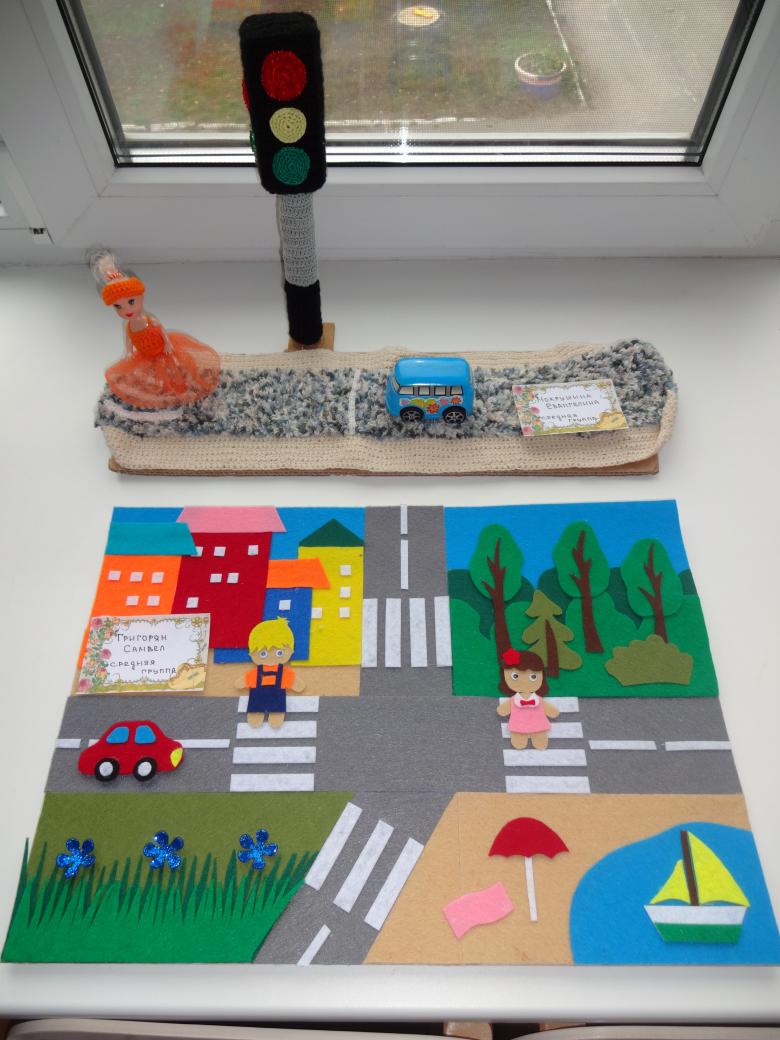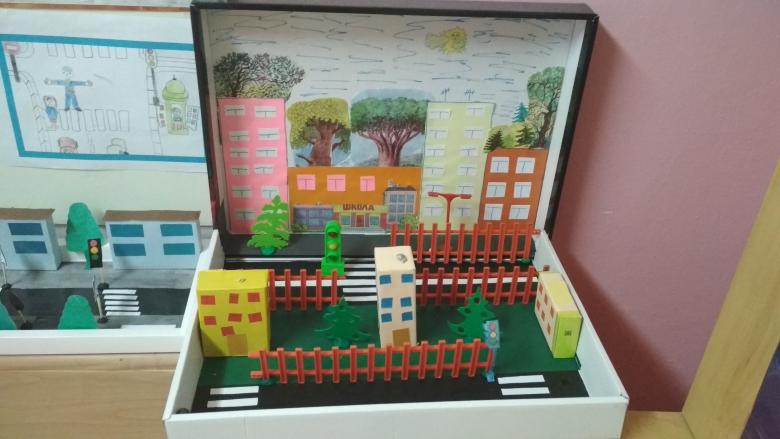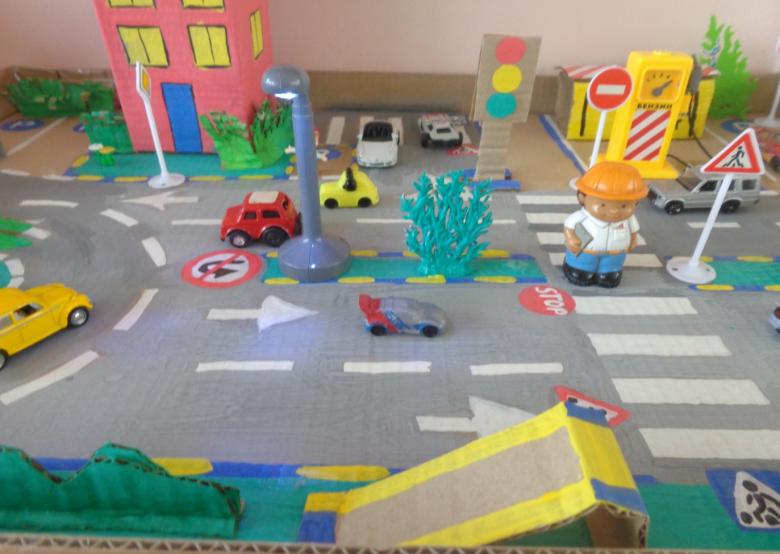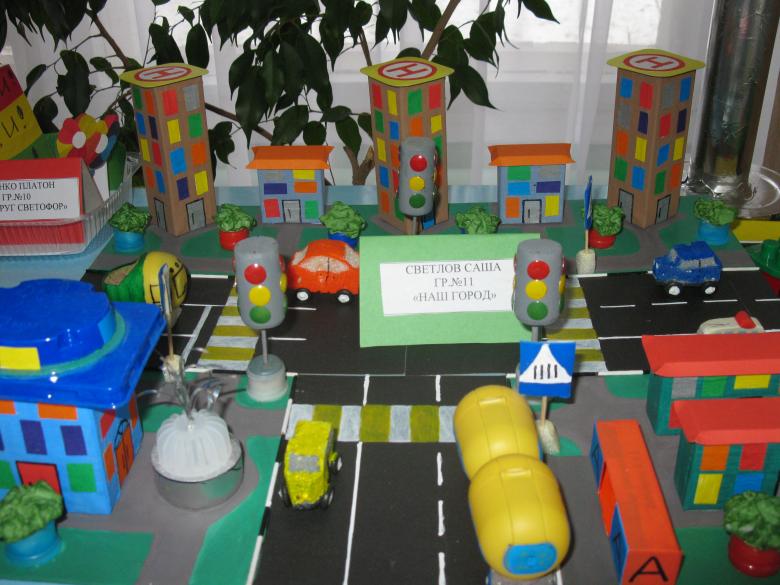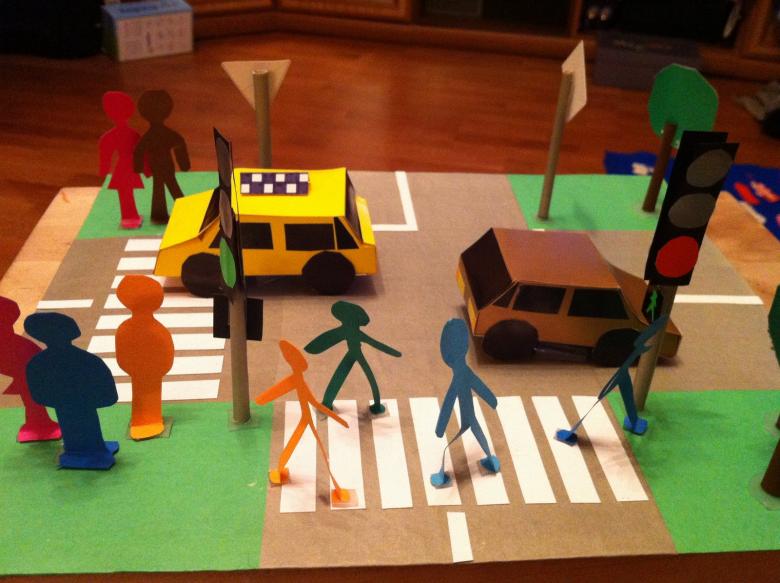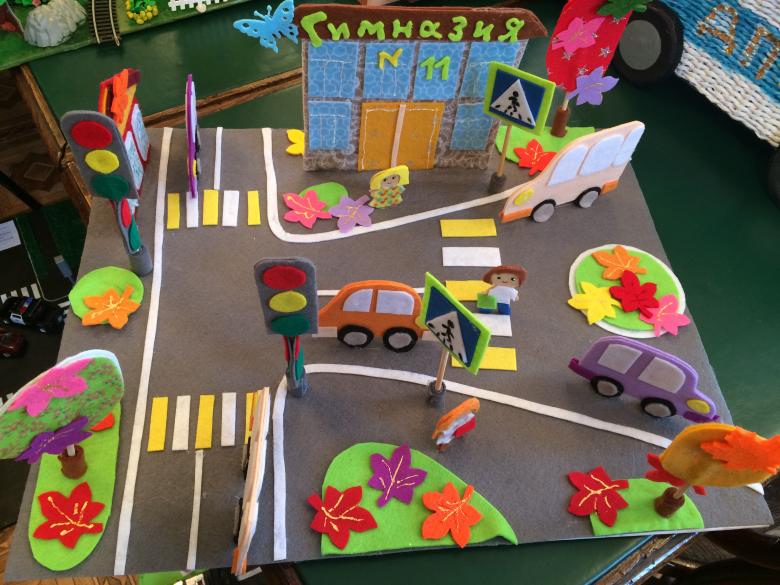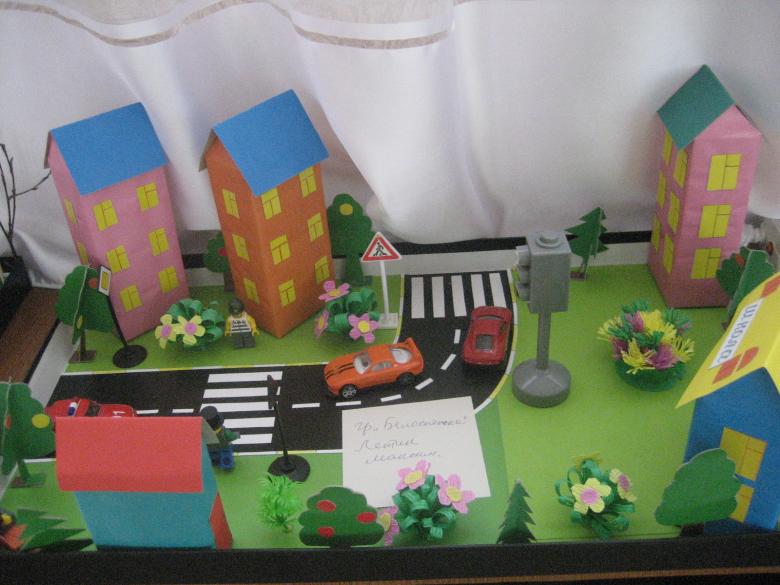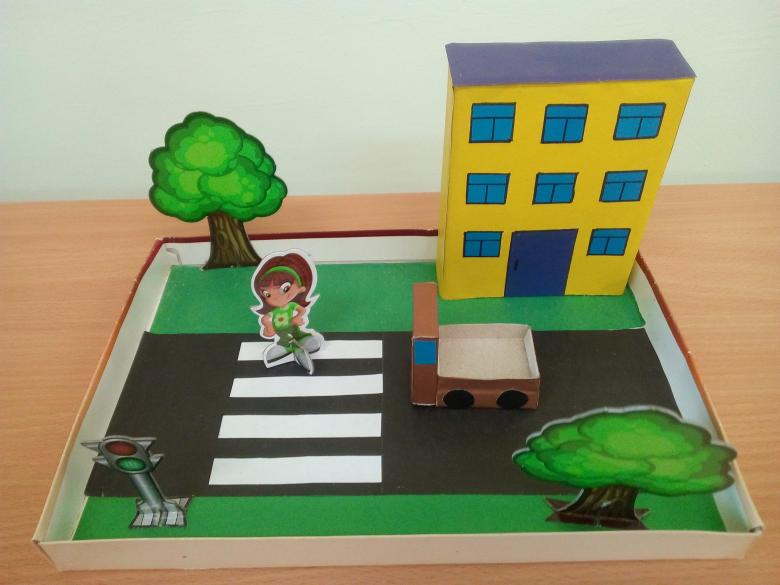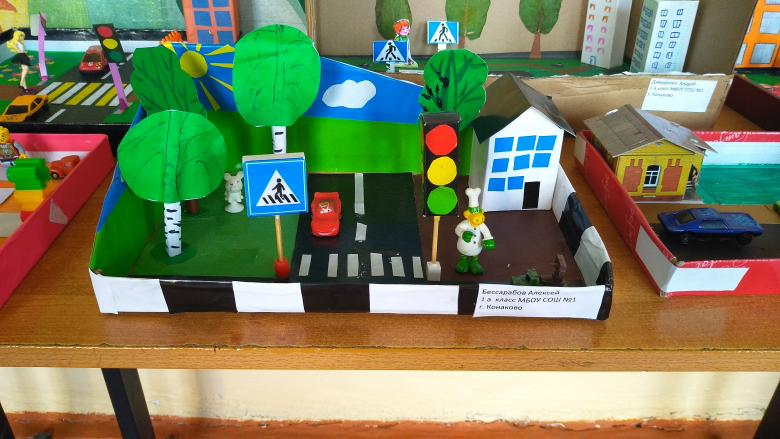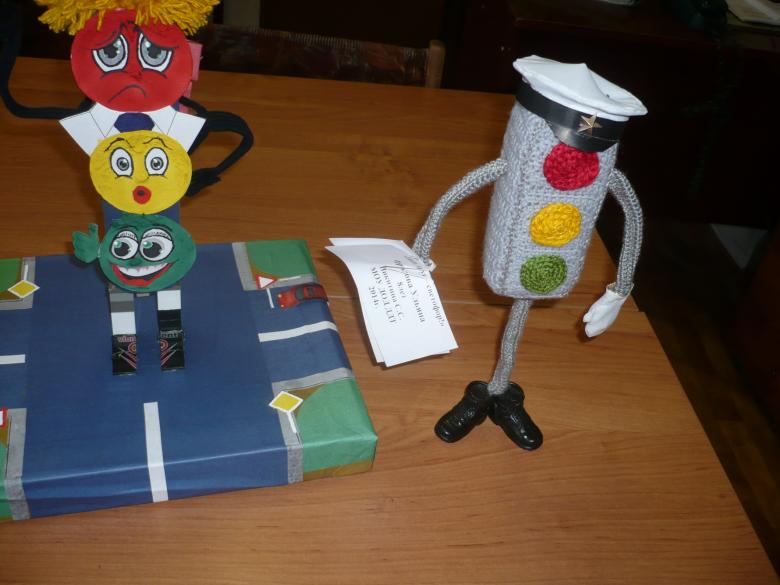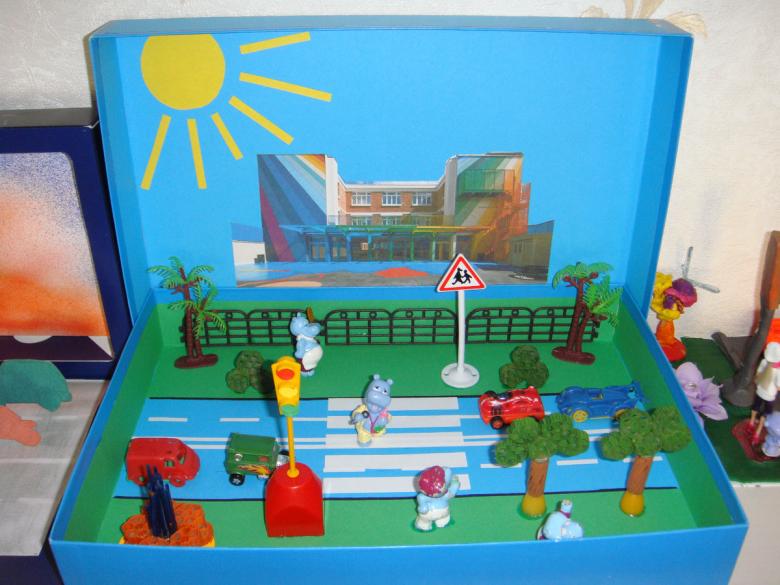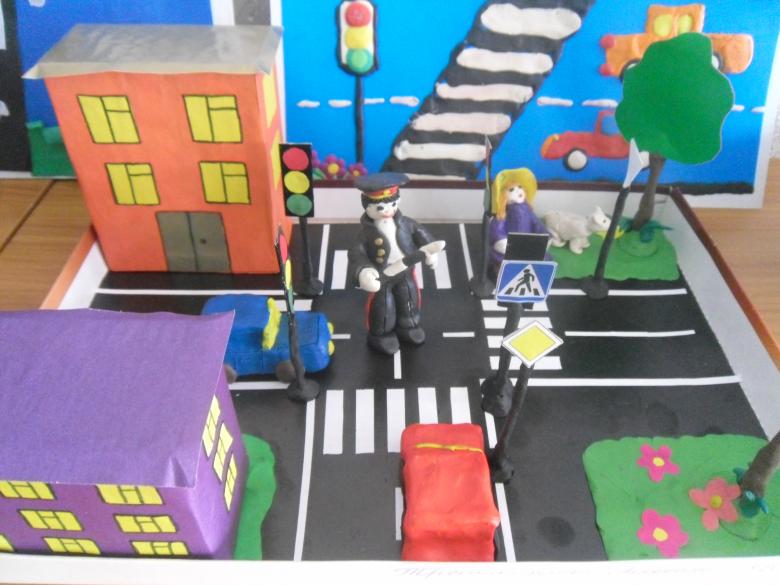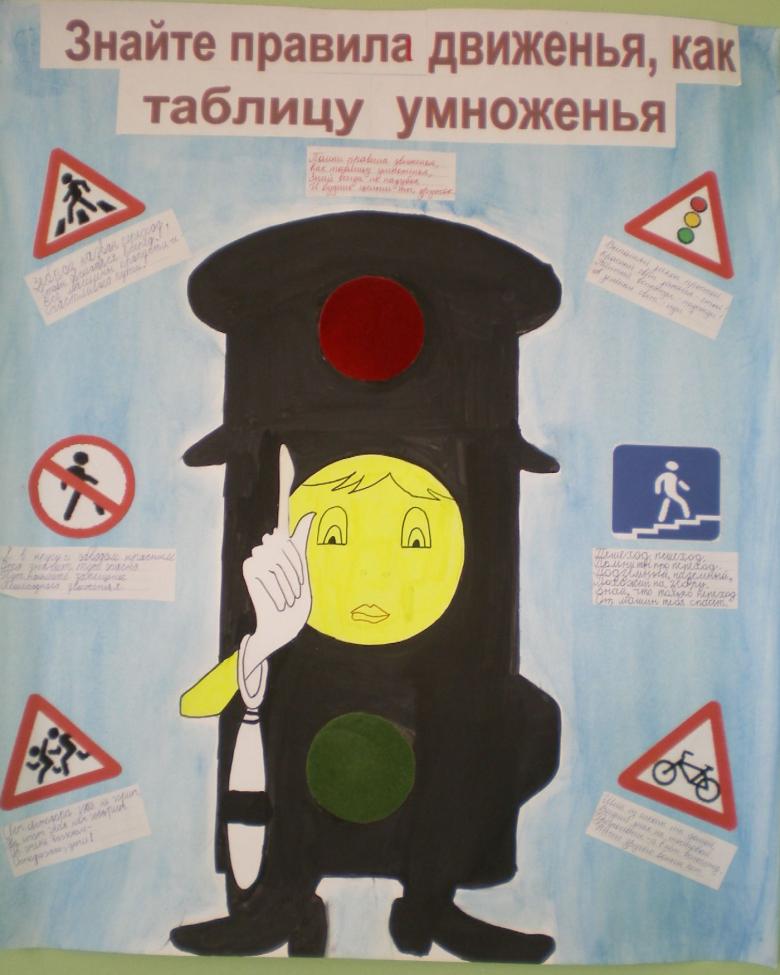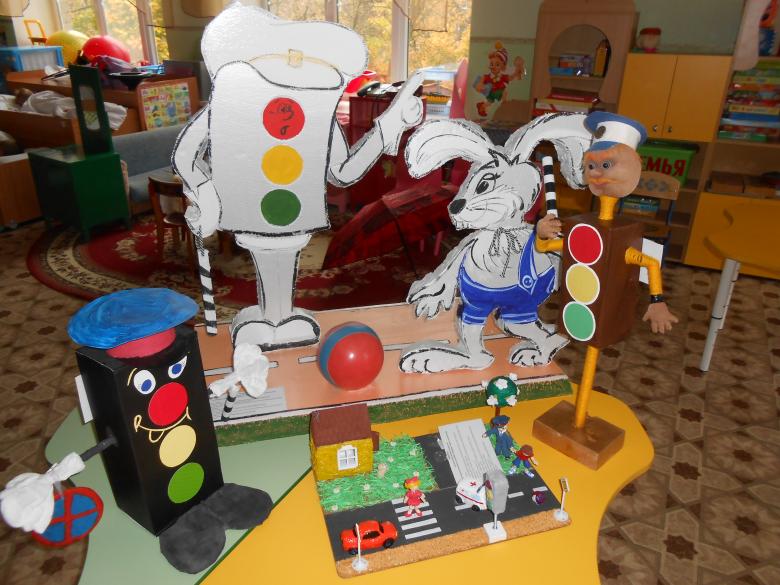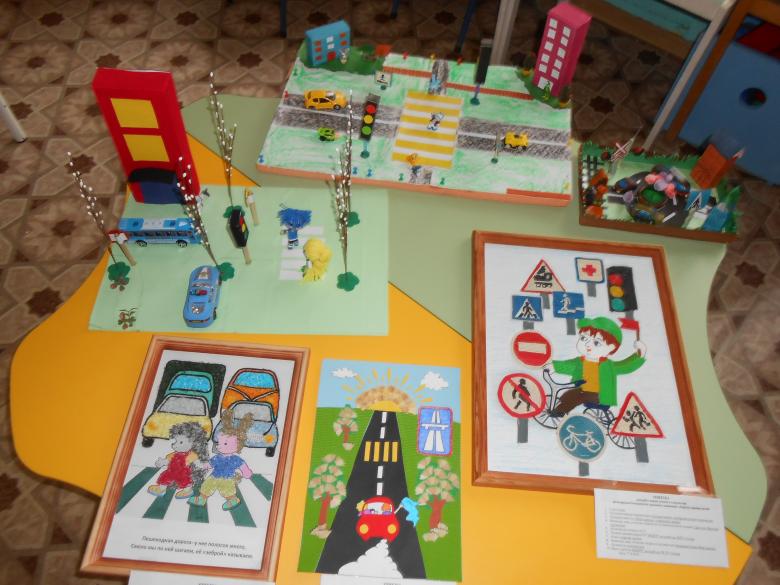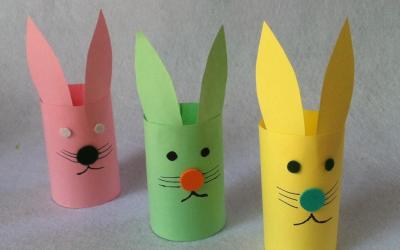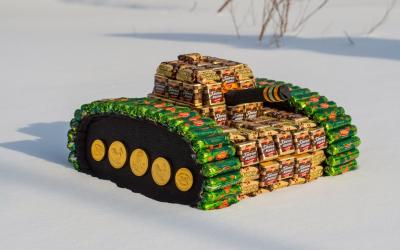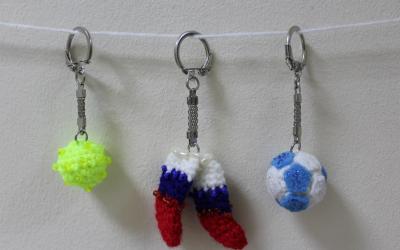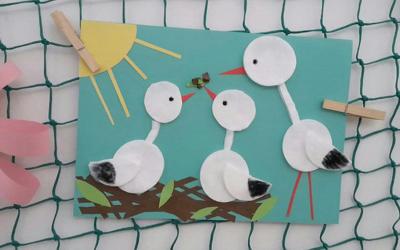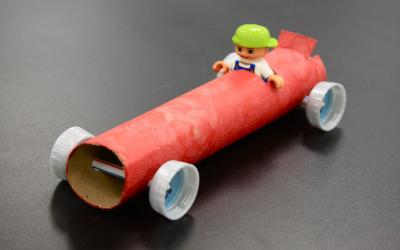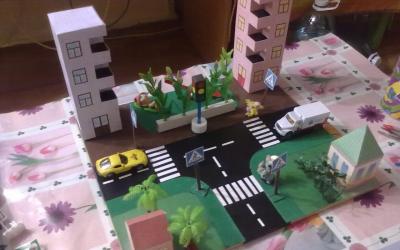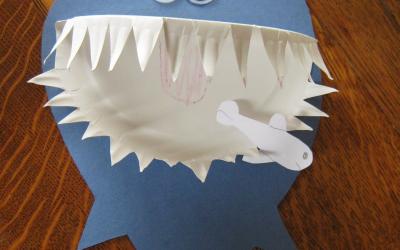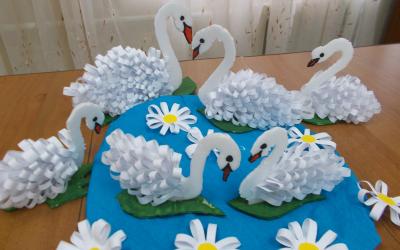Handicrafts on the theme of traffic - a selection of master classes, photo ideas and tips
In today's world, where there are two cars for every person, it is very acute to observe the law of the streets and roads. The road is a source of danger. Traffic rules are written by people and for people. They begin to learn them in kindergarten.
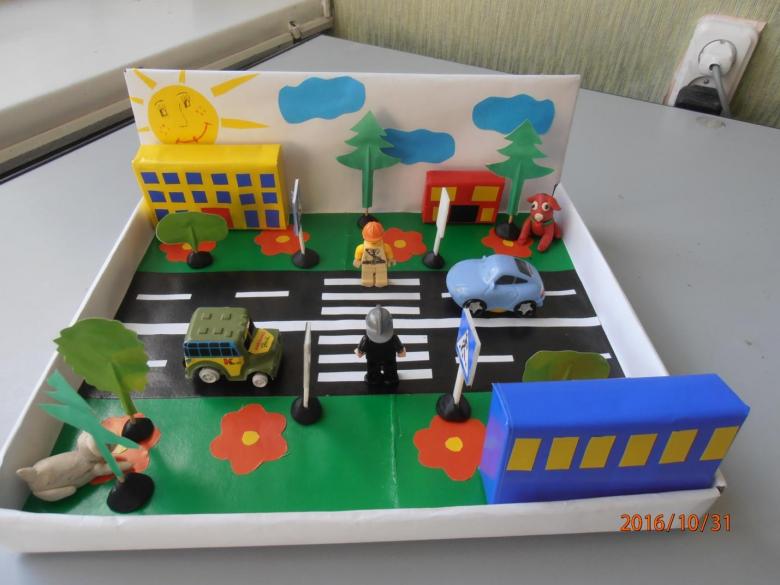
For a better learning, teachers use crafts. This method affects both visual perception and sensory perception. Excellent help a variety of thematic staging, which are used handicrafts made by children. So there is also an emotional consolidation of the right skill.
Road signs
"Pedestrian crossing".
Children need to know the places of the correct crossing of the carriageway. Although the sign "Pedestrian Crossing" is blue, for it we will also need a white cardboard sheet. On the white cardboard is glued blue with a triangular window at the top of the sheet. From black paper cut out a figure of a pedestrian and a "zebra".

Complicated version used for role-playing games. Make it according to the following scheme.
- For the base is prepared white plastic triangle (you can use an ordinary panel).
- Print the picture sign.
- Transfer the picture on self-adhesive paper. We make a stencil from it. We cut out the areas that we will have to paint. The rest of the glue on the plastic base.
- On those parts that we have cut out, we apply acrylic paint. (Blue for the edging, black for the central element).
- Remove the stencil only when the paint is completely dry. There is no need to rush, otherwise the paint will simply smudge.
- A white plastic profile must be attached to the edges of our product. With its help, you get an even white edging, which is able to mask the cut.
- Take a wooden lath or pipe. Fix the workpiece vertically on it. To make the sign more stable, you can make the base in the form of a cross at the bottom.
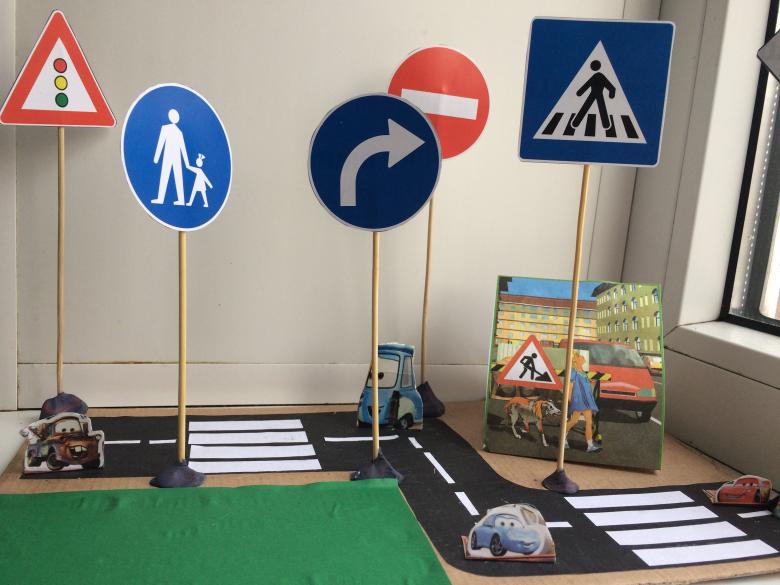
Impressive crafts with the use of reflective elements. Stickers, tapes, thermal transfer pictures, pretty huge assortment.

Very good tape on an adhesive basis. They are cut into geometric shapes of required size.
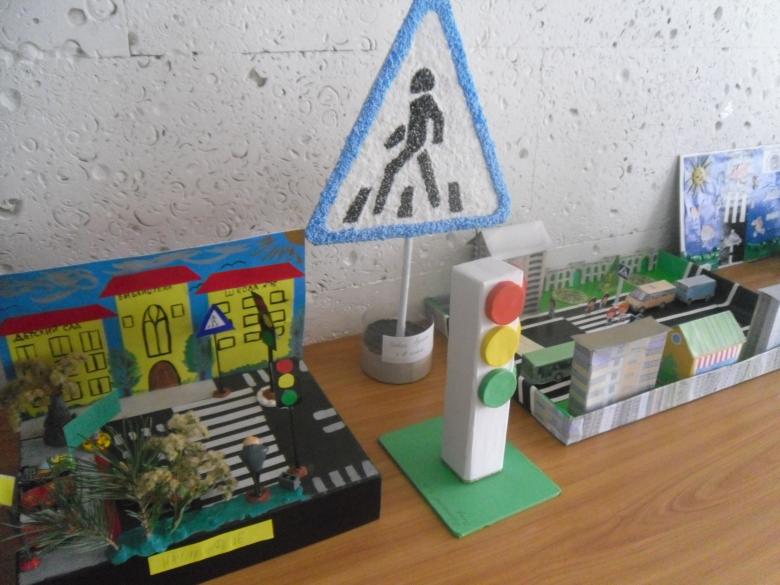
After we glue it, the upper part of the protective film is removed. Now the handicraft will be glowing in the dark.
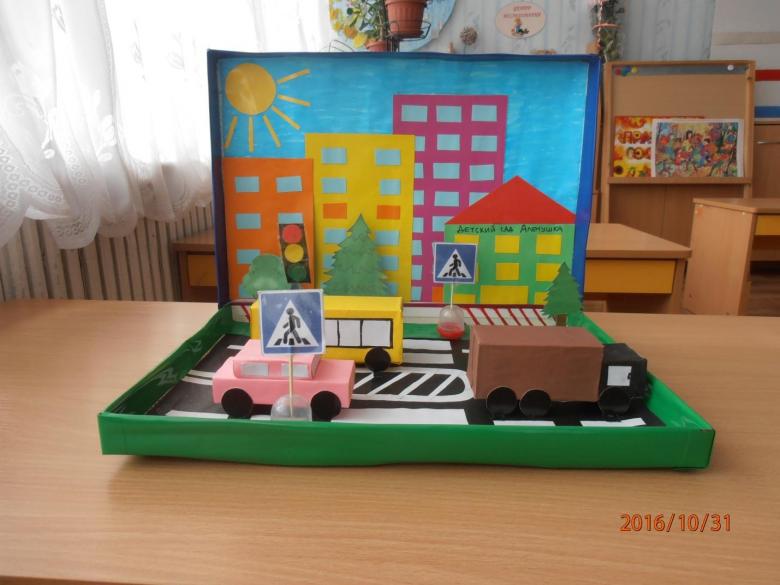
Model of a crossroads
The main task facing teachers, parents and educators in teaching traffic rules is to create the skill of safe behavior in the road infrastructure. For this purpose we use handicrafts on the topic of "Crossing". This is a traffic light, a crosswalk and thematic road signs.

On the territory of the school, yard or kindergarten you can make a model of a crossroads. Look for a flat, straight surface (so that water does not accumulate there in puddles). With a tape measure and chalk we mark the places where the traffic lights are installed and the crossing of the crosswalk with the improvised carriageway. Meter and chalk draw the crosswalk. Then using acrylic paint from top to bottom draw the curbs, the crosswalk. Remember that a traffic light must be at each corner of the intersection.

Traffic lights .
For making traffic lights there is more than one way. The easiest ones made from plastic bottles. Take a 2-liter dark bottle. Two or three (depending on whether we need a traffic light for pedestrians or drivers) windows are cut into it.
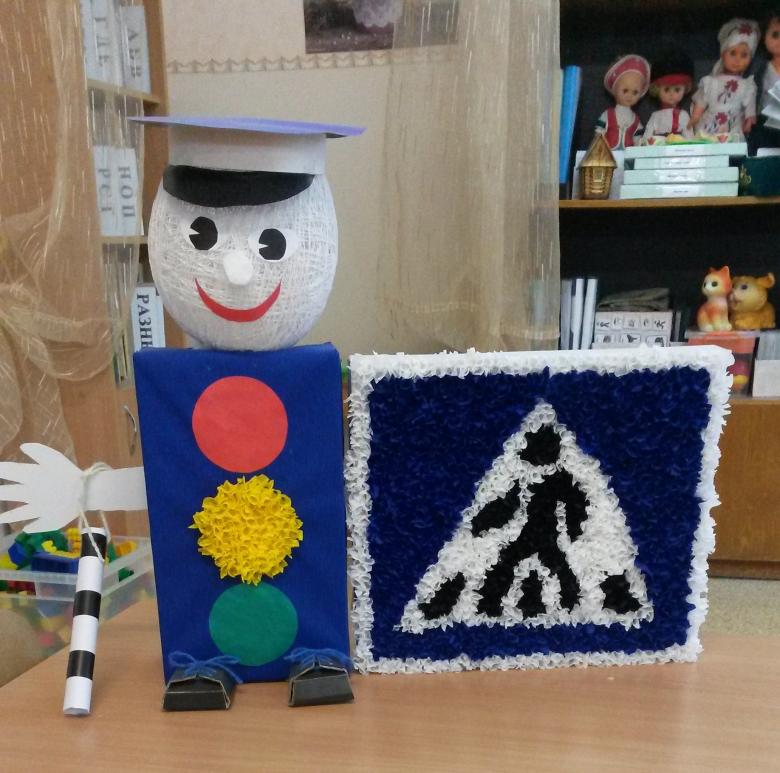
Opposite the windows we install the light bulbs. They are connected to batteries and equipped with a button to turn them on. Then we cover the windows with colored glass (red, yellow and green, respectively). You can take colored film for this. The button makes the traffic light work and lights the signal needed to perform a certain action.
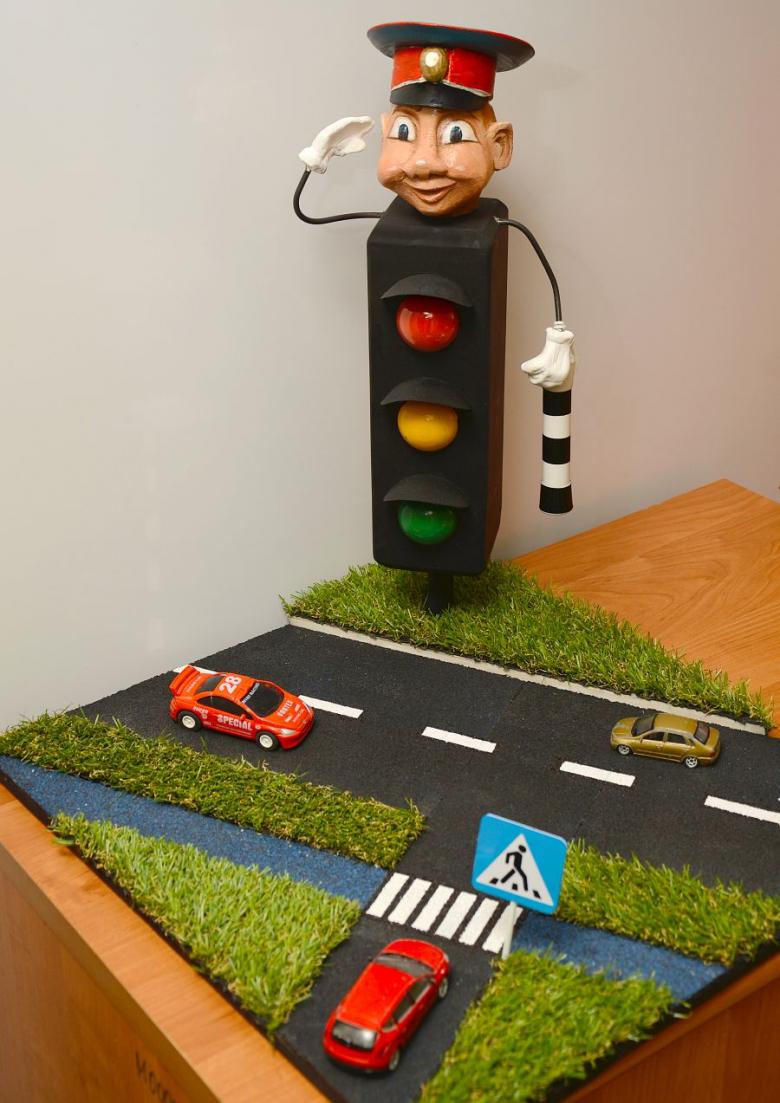
You can install the traffic light on a tube, which is buried in the ground or is portable.
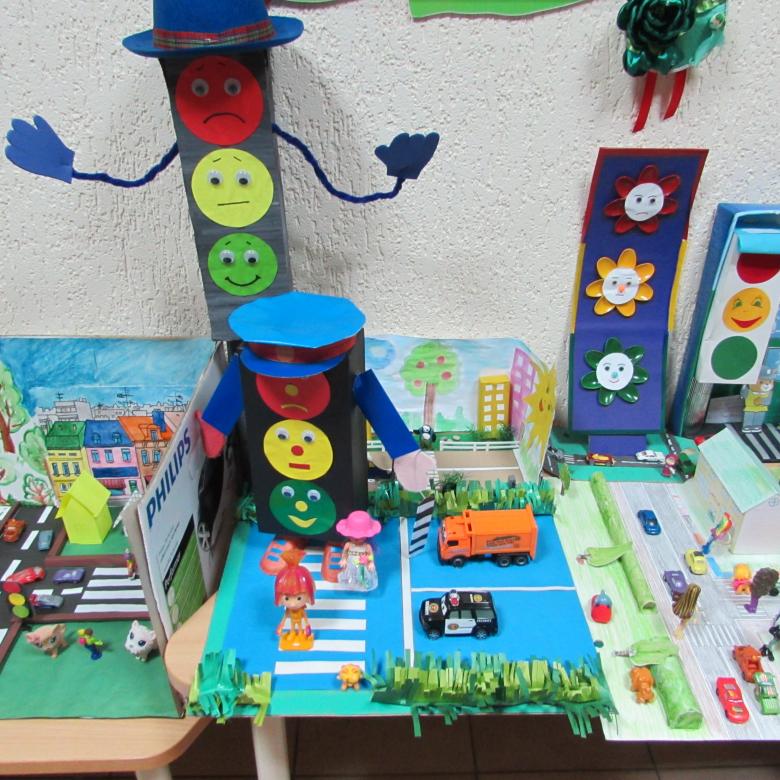
Mini City
A mini city model can be made by parents with a child. And you can do it as a project work in the elementary school or senior kindergarten class. We take the lid of the box. The bigger and wider it is, the better.
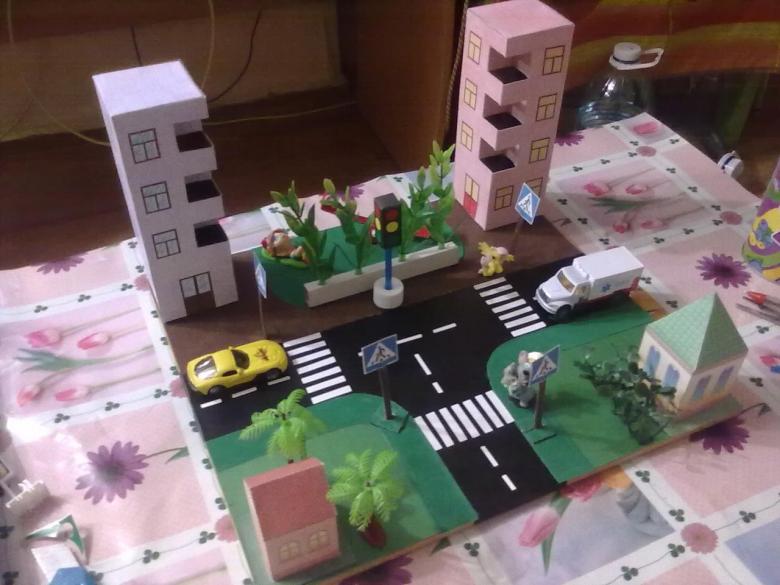
Master class on creating a microrayon
- On a piece of paper, equal to the area of the box, create a sketch diagram. Do not forget the houses, traffic lights and signs.
- Create houses. You can create the drawing of the house or take it from a construction book.
- Two wide strips of black paper are cut out. This is our driveway. Glue it on. Cut out four narrow strips from gray paper. This is the sidewalk. Carefully glue and him.
- From the white cut a thin white stripe-dividing strip.
- Then cut out the road marking "crosswalk". In turn, the layout is glued to the dividing strip and the "zebra".
- Volumetric traffic lights (so it can be seen from all four sides) are made from a black unroll, to which the pre-glued multi-colored circles-colors.
- We need road signs are cut out mirror to each other.
- Now it's turn of the houses. Glue them, creating a street and neighborhoods.
- If the boys in class will share small cars for the future city, it will be just great.

The game
To test your knowledge of the traffic rules, you can create a portable game.
- Create a playing field with houses, signs, and crosswalks.
- Think of interesting tasks that a pedestrian who gets to this or that point in the game will have to do.
- We choose pedestrian characters for the game.
- Cut out and glue the game cube. If there is an old one, even better.
Now on your way!
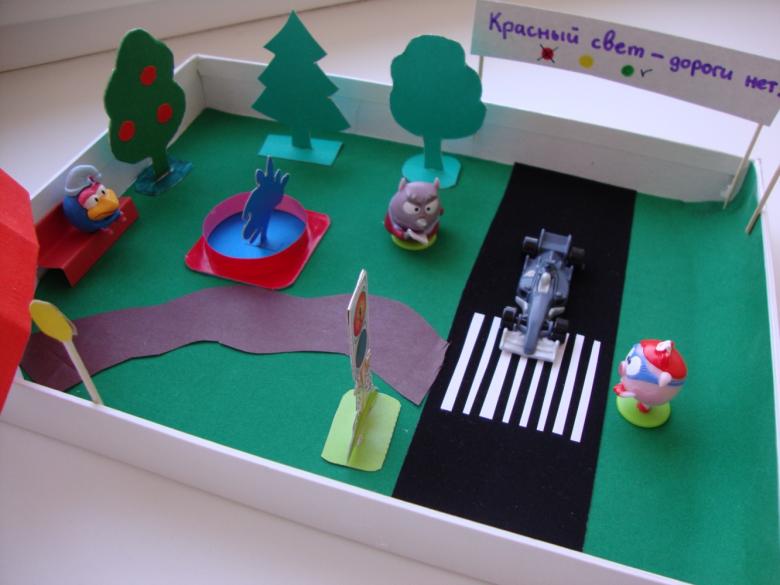
The wall newspaper .
This is an incomparable visual tool.Issued with the children in the school teacher in charge of the work of traffic. To keep the information up to date, it is recommended to issue it every two weeks. Here you can create a variety of headings, reflecting in them information about competitions on the traffic rules, the work of the group of young traffic inspectors. You can put a certain historical background on the traffic rules.

The history of flicker, traffic lights and road signs, for sure, will attract the attention of many. Young intellectuals may be interested in a crossword puzzle or chaynword on the traffic rules. The photo of non-standard road signs from other countries will inspire a more thorough acquaintance with their own. The main thing is to involve children in learning and obeying the rules of the road. And for this all means are good!
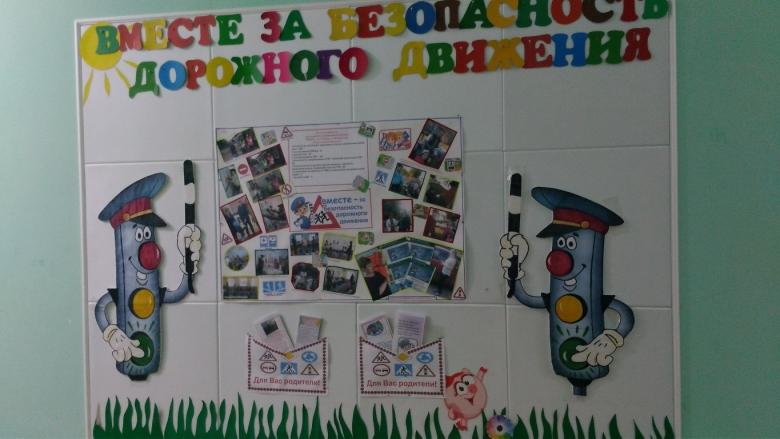
Master class on making a wall newspaper. It can be stationary with interchangeable headings or completely changing. Consider the stationary version.
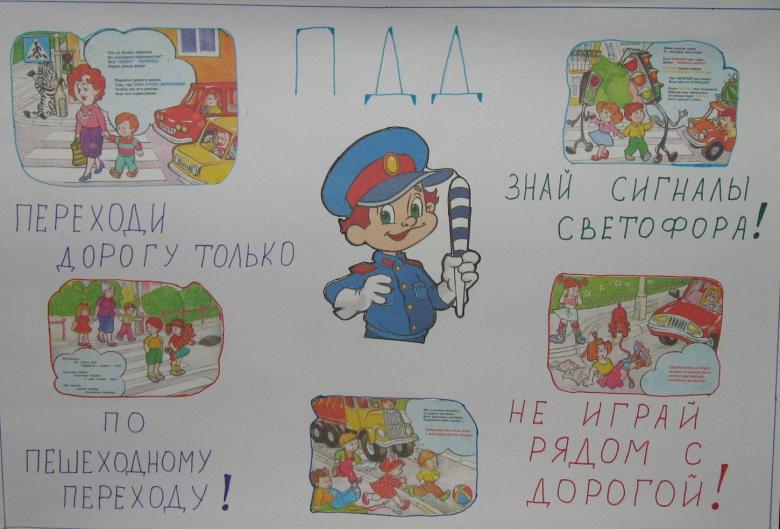
The best format for a wall newspaper is A 1-vatman.1.Measure its dimensions. 2. We take a sheet of plywood and process it so that we get a stand with the given parameters. 3. We take the wattman and mark out the space for the main headline and headings. 4. Decorate the wall newspaper according to the plan developed. 5. We use a screwdriver to fasten the brackets, on which the stand will hang. 6. We take the buttons and fasten the wall newspaper on the stand. Everything is ready!
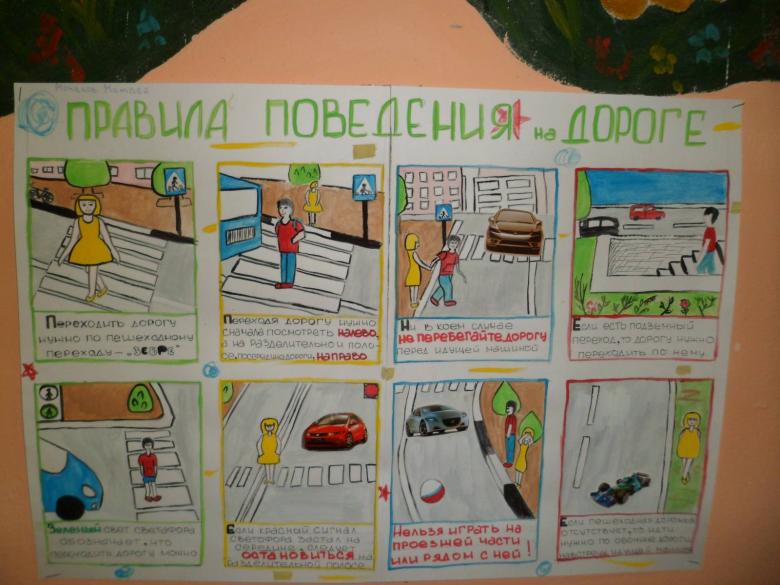
Such a wall newspaper can always be easily updated. And if it will be issued on a schedule by a changing editorial board, it will never bore its readers with its sameness.And if you hold a competition between classes at school of similar wall newspapers, the work on the study of traffic rules will boil all year, which will be reflected in a reduction of accidents. After all, where traffic rules are studied in this way, children are less likely to get into accidents! Making a traffic light, signs, a wall newspaper can be combined with learning poems, songs, reading stories, watching cartoons on the traffic rules. So the information is memorized much faster and of higher quality.

